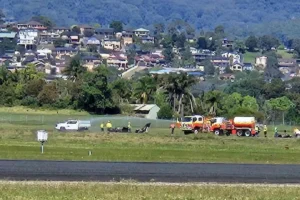More than one-fifth of Australians aged 18 to 45 have committed some form of sexual violence since the age of 18, with one in 14 doing so in the past year, according to a survey of over 5,000 Australians.
The report from the Australian Institute of Criminology, released on Tuesday, also found that men were significantly more likely than women to have perpetrated sexual violence, with 26.4% doing so in adulthood and 13.2% in the past 12 months. This compares to 17.7% of women perpetrating sexual violence since turning 18, and 6.6% in the past 12 months.
The survey asked respondents about a range of sexual violence, including harassment, coercion, assault, and image-based abuse. The report’s authors noted that men were not only more likely to commit sexual violence than women but also tended to perpetrate more serious forms of violence and potentially more frequently.
“The results indicate that men not only were more likely to perpetrate sexual violence than women, but also that they committed more serious forms of violence when they did, and possibly more frequently,” the authors wrote.
The most common forms of sexual harassment or coercion reported were pressuring someone for a date or sexual activity, with 10.2% of respondents admitting to doing so in adulthood and 3.8% in the past 12 months. The study also revealed that 6% of respondents had emotionally or psychologically manipulated someone into sexual activity.
Regarding sexual assault, the report found non-consensual kissing to be the most common form, with 6.6% reporting perpetrating it in adulthood, followed by non-consensual touching at 6.4%. About 2.7% reported perpetrating non-consensual sexual intercourse in adulthood, and 2.4% admitted to “stealthing” – removing a condom during sex without their partner’s knowledge or consent.
In total, 3.3% of respondents admitted to perpetrating image-based sexual abuse, with 2.6% having recorded intimate images or videos of another person without consent, and 2.1% having shared or threatened to share such images or videos without consent.
Dr. Rick Brown, deputy director of the Australian Institute of Criminology, highlighted that only a “small proportion of perpetrators” come into contact with the criminal justice system. He emphasized that most offenses are never reported, and few cases lead to prosecution or conviction.
The authors of the report suggested that rates of sexual violence may be even higher than reported, as a significant proportion (11.1%) of respondents were unable or unwilling to disclose their perpetration of sexual violence for one or more items. They attributed this to respondents choosing not to report or underreporting behaviors seen as socially undesirable.
They also stressed the importance of understanding the factors driving perpetration to focus prevention efforts on perpetrators rather than solely on victims.
In 2023, there was an 11% increase in the number of sexual assault victim-survivors recorded by police, according to a report from the Australian Bureau of Statistics released in June this year. This marked the highest rate of recorded sexual assault victim-survivors in the 31-year dataset.
Katherine Berney, executive director of the Women’s National Safety Alliance, expressed hope that the data would prompt a more nuanced response to sexual violence.
“These findings are horrifying but consistent with what we’re hearing from our specialist sexual violence services,” Berney said.
She emphasized that the data debunked Australia’s “widespread narrative” that women lie about sexual assault to ruin men’s lives.
“We’ve known it’s not true… but now the perpetrators themselves have told us it’s not true,” Berney stated.
Phillip Ripper, CEO of No To Violence, an organization specializing in changing the behavior of men who use violence and abuse, described the research as “alarming” and indicated that current approaches “aren’t working.”












